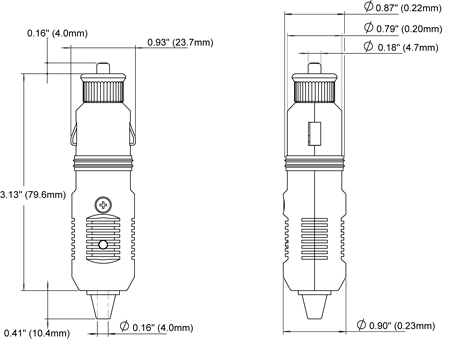90s will cause fridge to consume a lot more energy than 70's, as will as 12f setting, but the 10 awg wire blue seas receptacle should likely solve the low voltge cut off.
The MT5 meter is not really to be trusted in terms of battery capacity remaining. it only has an idea of the loads based on what is wired to go through controller.
A big inverter cannot be wired through the controller and its load would not be recognized nor displayed.
Instead of going by % remaining, what is the voltage reading on meter when the fridge was cutting out?
The panel meter is nice for displaying what the solar panel is making, and can perhaps monitor smaller loads wires through the controller, and make a guestimate as to remaining percentage, but a real battery monitor has a shunt, which is a precision resistor with a known value. The more amps it passes the more voltage drops across it, and the drop can then infer amperage. The monitor then monitors actual total amps into and out of the battery. the MT-5 meter cannot do this.
An Ammeter is a wonderful tool for learning. It can show how much the battery is accepting at a certain voltage when charging, or another way of putting it, it will show how much voltage X amount of charging amps have been able to bring the battery to. Under discharge an ammeter will show just how much load there is on the battery.
I recommend people carry a digital multimeter, and go one step further and get the clamp on AC/DC Ammeter such as this:
https://www.amazon.com/Uni-T-B4Q094-UT210E-Current-Capacitance/dp/B00O1Q2HOQ
Clamp the meter over any single wire, the + or the -, not both at once, and it will show amperage flowing through that wire/cable.
If your Whytner compressor is not functioning properly it might be drawing way more amperage than the 4.5amps/ 65 watts it specs.
That 4.5 amps would be at 14.4v though, at 12.6v 65 watts is 5.15 amps. If the clampmeter showed much more than 5.5 amps 15 seconds after compressor fired up, I would return the whytner. The compressor will always require about 65 watts when running so the lower the voltage it receives the more amperage has to flow through the wiring. the more amperage that flows the more heating and resistance and voltage drop occurs.
If one is using alternator to charge house battery, then one can clamp the meter over the cable from alternator to see how much it is delivering to battery when engine is running.
The DC clampmeter is a wonderful diagnostic and learning tool when learning to live on battery power. the MT-5s limitations are more confusing than helpful to a newb, in my opinion.











































































